Clancy Tucker's Blog, page 263
April 2, 2015
3 April 2015 - DUNCAN BALL - Guest Author

DUNCAN BALL
- Guest Author -
G'day folks,
Welcome to the life of a very successful author. Duncan Ball was born in the USA, but came to Australia in 1974. We are glad he did.Welcome, Duncan ...
1. TELL US A LITTLE ABOUT YOURSELF AND YOUR WRITING JOURNEY.
I wasn’t a good reader as a kid. It’s ironic that I now write them when I’d read so few early on. Having been a poor reader did make me aware that many kids are poor readers and, in order to get them reading I should make my writing as accessible as possible.
2. WHEN AND HOW DID YOU BECOME A WRITER?
I became interested in writing as a teenager and read a lot and widely. Much later, when I was in my thirties and working as an industrial chemist, I wrote my first published work, an adult thriller. I had no idea how to go about it but just plunged in.
3. WHAT TYPE OF PREPARATION DO YOU DO FOR A MANUSCRIPT? DO YOU PLAN EVERYTHING FIRST OR JUST SHOOT FROM THE HIP?
I’ve tried writing with careful planning, with no planning at all and with various degrees of planning. What works best for me is to have a general direction in mind and, sometimes, an ending. Then, as I write, I outline a bit of the road ahead but try not to make it too detailed in order not be too inhibited by it. And I keep altering the outline. In all the decision-making, there’s a lot of instinct. When I think I have enough material in hand I start to re-write. I do a lot of re-writing and polishing but being careful not to I destroy the freshness of the first draft. As with so much about writing, it’s a balancing act.
4. WHAT DO YOU ENJOY MOST ABOUT BEING A WRITER?
Within obvious limits, when you write the sort of fiction I do, you can write whatever you want. Because of the collaborative nature of writing for film and TV they’re not as much fun, although better paying.

5. WHAT IS THE HARDEST THING ABOUT BEING A WRITER?
Coming up with the ideas. That and making the plots work. The business side is also hard. The writers who have a head for business often aren’t the best writers and the good writers are usually hopeless at business. Much as authors hate it, they have to get involved in promoting themselves and their work. (More on this later.)
6. WHAT WERE YOU IN A PAST LIFE, BEFORE YOU BECAME A WRITER?
I studied Mathematics and Chemistry at university and worked for some years as an industrial chemist.
7. WHAT IS YOUR GREATEST WRITING ACHIEVEMENT?
My greatest achievement is having written 75 or 80 books (I haven’t counted them). I’m a painfully slow writer so this has taken me many years. It would be immodest to say that, at their best, they are very good. So I won’t say that. My books have also won a number of awards. It’s fun to get a pat on the back.
Lots of things have come my way including having a group of Cree First Nations kids in Saskatchewan perform my play “The Perils of Prince Percy of Pomegranate” (which they re-titled, “The Perils of Chief Cimagasiw of Ciciganihk”) which went on to win a number of awards.
The Monkey Baa Theatre Company in Sydney adapted some of my Emily Eyefinger books to make a stage play. The play toured Australia over a couple of years and was a great success not only to Monkey Baa but also to my books. They did a fantastic job.
8. WHAT ARE YOU WORKING ON AT THE MOMENT?
I’ve recently finished a book of re-tellings of Japanese folk tales called, Two Tengu Tales from Japan. It will be illustrated by the wonderful David Allen and published in July 2015. I’m now working on the re-write of a book of my comedy plays for kids that has long been out of print. This was originally called Comedies for Kids but will be re-named, This School is Driving Me Nuts! and Other Funny Plays for Kids. It will be also published in July.
9. WHAT INSPIRES YOU?
Reading. I love a well-crafted story, can’t turn the pages of most “page-turners” and am too easily bored by the kind of “literary fiction” that doesn’t have a strong storyline or it’s hidden behind annoying literary tricks.
10.WHAT GENRE DO YOU WRITE?
I generally write fiction for kids of about six to twelve years of age. Much of my work, such as my Selby and Emily Eyefinger series, is in the form of funny short stories. I’ve also written a book of funny poetry called, My Sister Has a Big Black Beard.
11.DO YOU HAVE ANY TIPS FOR NEW WRITERS?
Motivation is everything. Write to the best of your ability. It will be hard work---but it’s worth it. Don’t waste a lot of time reading books about how to write. You really have to feel your own way. Hemmingway said, “The most essential gift for a good writer is a built-in, shockproof, shit detector.”
Also---as much as successful authors hate to admit it---luck plays a role in the success of their writing. The only way to improve your chances is to put a lot out there.
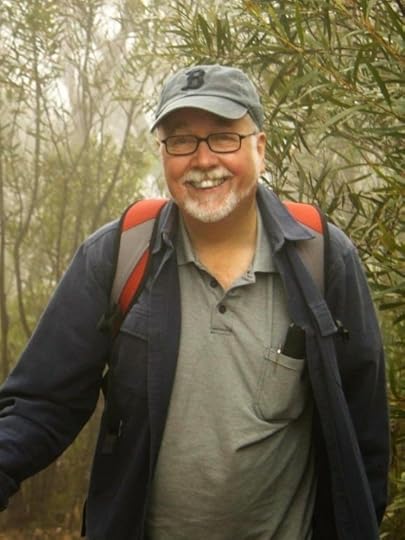
12.DO YOU SUFFER FROM WRITER’S BLOCK?
Always.
13.DO YOU HAVE A PREFERRED WRITING SCHEDULE?
No. I’m neither well-organised nor disciplined. Somehow I manage to get the work done.
14.DO YOU HAVE A FAVOURITE WRITING PLACE?
My study. I can’t write anywhere else.
15.WHAT IS YOUR GREATEST JOY IN WRITING?
I do like doing it. It’s a great feeling when things work.
16.WHO IS YOUR FAVOURITE AUTHOR AND WHY?
I have so many. P. G. Wodehouse and Ian McEwan spring to mind but there are soo many more.
17.WHAT’S THE GREATEST COMPLIMENT YOU EVER RECEIVED FROM A READER?
Kids write to me and they’re always complimentary. I’ve also had emails and letters from parents thanking me and saying that if it hadn’t been for my books their child would never had learned to read. They would have, of course, but it’s nice to think my books may have made a difference.
(I’ve received over ten thousand emails from kids since 2007. And, yes, I think I’ve answered them all.)
18.WHAT WAS THE WORST COMMENT FROM A READER?
If kids take the time and trouble to write, they always say nice things. I can’t remember any bad ones.
19.WRITERS ARE SOMETIMES INFLUENCED BY THINGS THAT HAPPEN IN THEIR OWN LIVES. ARE YOU?
Yes, all the time. For example, I had some dental work done and my talking dog character, Selby suddenly developed a toothache, too. Selby didn’t want to see a vet and have the tooth pulled but wanted to see a real “people dentist” and get seen to properly. All of which set up a typical Selby problem. (See “By the Skin of His Teeth” in the book Selby’s Secret.)
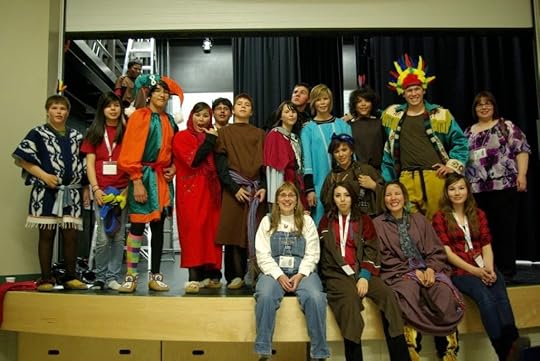
20.OTHER THAN WRITING, WHAT ELSE DO YOU LOVE?
I enjoy bushwalking, cycling, swimming, painting, reading, among other activities.
DID YOU HAVE YOUR BOOK / BOOKS PROFESSIONALLY EDITED BEFORE PUBLICATION?
No. I just make sure it’s a problem-free as I can before I sent it to my publisher. I welcome constructive comments from editors and I think we owe them the respect of giving them the best writing we can for them to work with. Also, editors are under a lot of pressure these days and can’t be expected to catch every mistake so it’s best to make sure a MS is as clean as possible.
21.DESCRIBE YOUR PERFECT DAY.
Have breakfast. Work. Take a walk at lunchtime. Work again. I try not to work in the evening anymore because it keeps me from getting to sleep.
22.WHAT ARE YOUR PLANS FOR THE FUTURE?
To continue writing but, ideally, without deadlines. Deadlines have been helpful in the past but I don’t need the added stress.
23.DO YOU SEE YOURSELF IN ANY OF YOUR CHARACTERS?
My main characters always have bits of me in them. This goes for Selby (a dog), Emily Eyefinger (an 11-year old girl with an eye on the end of her finger) and Bert Piggott (a 12-year old boy).
24.DOES THE PUBLISHING INDUSTRY FRUSTRATE YOU?
Hugely.
25.DID YOU EVER THINK OF QUITTING?
Often, but then what would I do? I would like to spend more time painting.
26.WHAT WAS YOUR FAVOURITE MANUSCRIPT TO WRITE? WHY?
My book of funny poetry for kids, My Sister Has a Big Black Beard was fun to write and left me feeling---dare I say it?---proud of the result. It took a few years but I also worked on other books at the same time. It was very cleverly illustrated by Kerry Millard.
27. HOW WOULD YOU DEFINE ‘SUCCESS’ AS A WRITER.
In two ways: There’s the artistic satisfaction and the monetary rewards that allow you to develop more of your time to it. Few writers can make a living from just writing. I’m one of the lucky ones.
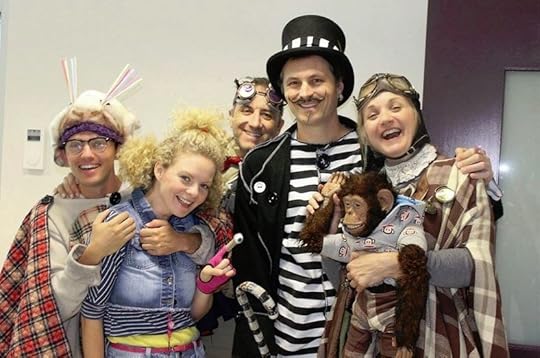
28. WHAT SHOULD READERS WALK AWAY FROM YOUR BOOKS KNOWING? HOW SHOULD THEY FEEL?
I try not to be didactic. I’m not out to teach. I’d like my reader to immerse themselves in the worlds I’ve created and to feel the whole range of emotion that the stories attempt to deliver.
29. HOW MUCH THOUGHT GOES INTO DESIGNING A BOOK COVER?
The publisher designs the covers. This is very much a part of the marketing of books. People judge books by their covers. We all do. My publishers usually ask me for my input but, ultimately, they call the shots. I’ve had wonderful book covers that enhanced my books and dreadful ones that killed them.
30. WRITING IS ONE THING. WHAT ABOUT MARKETING YOU, YOUR BOOKS AND YOUR BRAND? ANY THOUGHTS?
If writers want to sell their books they have to get involved in the marketing. There are many ways to do this and I hate everything to do with it. I do any radio and TV interviews the publishers’ publicists line up but I really don’t enjoy them. I don’t like using social media to promote myself and my work but I still do some.
31. ARE YOUR BOOKS SELF-PUBLISHED?
No. The problem with self-publishing is distribution. Authors can’t do it and distributors don’t want to distribute books from someone who doesn’t have lots of “product”. And they take a big chunk of the sales price.
32. WHAT IS THE TITLE OF THE LAST BOOK YOU READ? GOOD ONE?
I just re-read Tove Jansson’s The Summer Book. I loved it again.
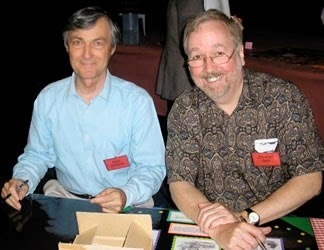
33. ANYTHING YOU’D LIKE TO ADD?
Children’s books usually have illustrations. I don’t do my own. I am very much in the debt of such great illustrators as Allan Stomann (for illustrating all nineteen Selby books to date) and to Craig Smith (who illustrated all sixteen Emily Eyefinger books and a couple of my other books. And I’ve had many other wonderful illustrators including as Donna Rawlins, Noela Young, Mark David, Kerry Millard, Kevin Burgemeestre and Mitch Vane. I would be nothing without them.
One of the unexpected pleasures of a writing life is travel. I’ve seen every corner of Australia plus trips to New Zealand, Indonesia, Thailand, China and many other places at the invitation of writing festivals and conferences, and visiting schools and libraries. So much for starving in a garret.
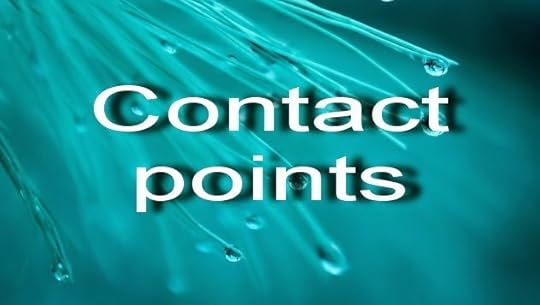
BLOG:
http://www.duncanball.blogspot.com.au/
WEBSITE:
https://duncanball.informationaccessgroup.com/index.html
 Clancy's comment: Thank you, Duncan, and well done. I'm glad that your writing has sent you across the globe. Your study looks very cosy, not to mention your deputy assistant director sitting on your desk.I'm ...
Clancy's comment: Thank you, Duncan, and well done. I'm glad that your writing has sent you across the globe. Your study looks very cosy, not to mention your deputy assistant director sitting on your desk.I'm ...
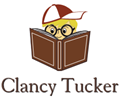
Think about this!
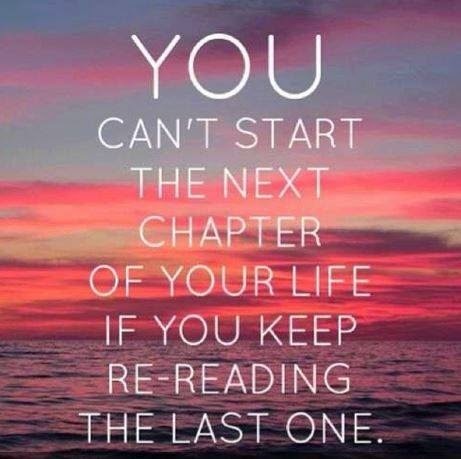
Published on April 02, 2015 02:09
April 1, 2015
2 April 2015 - CLEVER CATS

CLEVER CATS
G'day folks,
Someone once told me that you are not in charge if you own a cat. Mm ... Check out these shots.
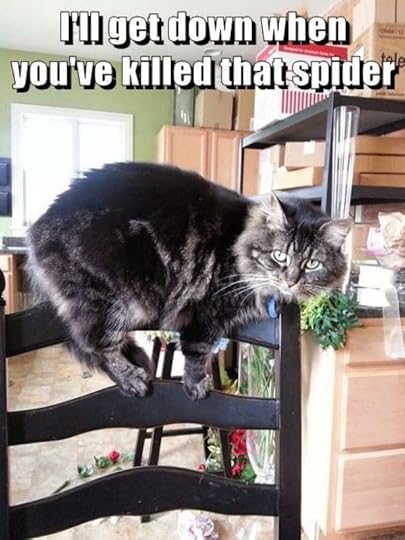

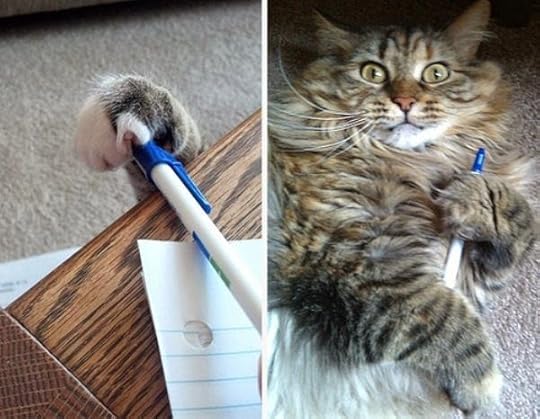

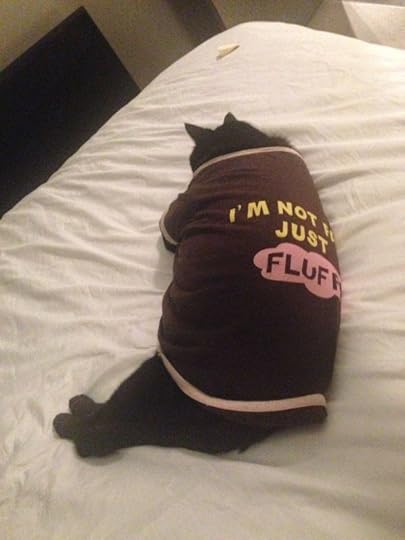

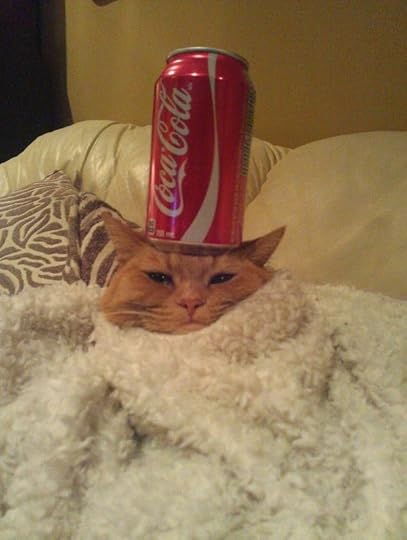
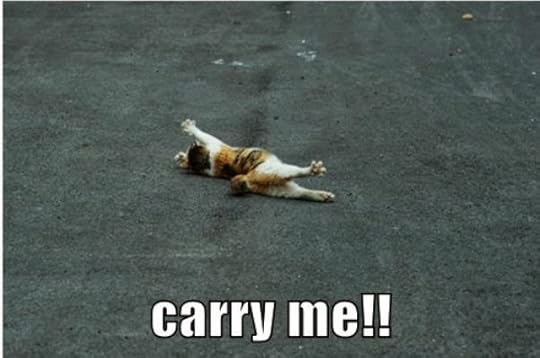
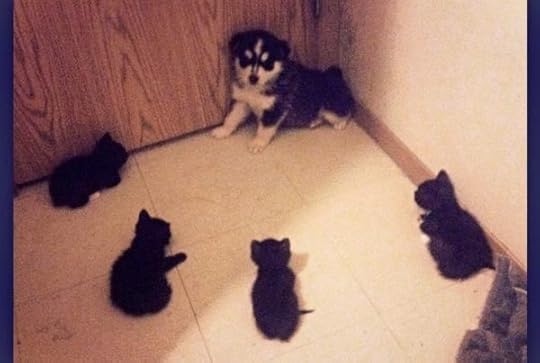
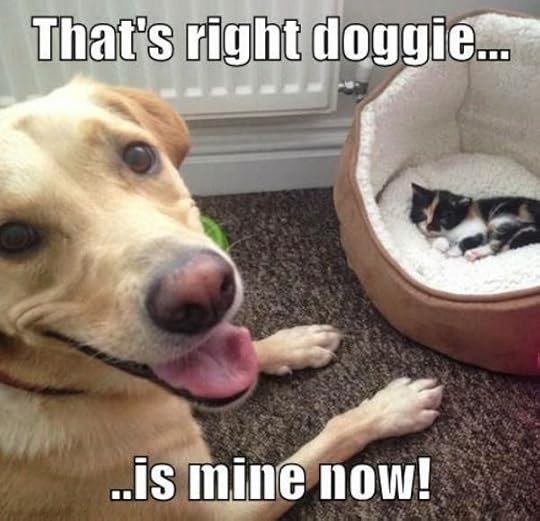


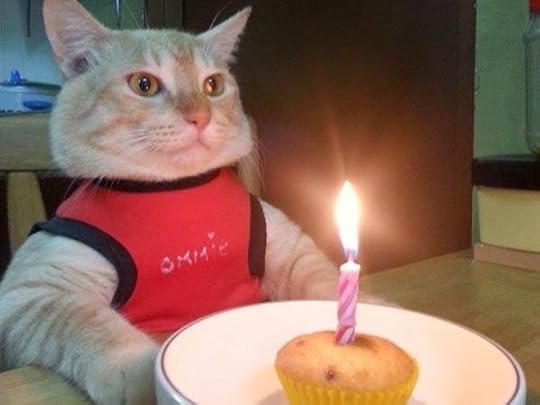
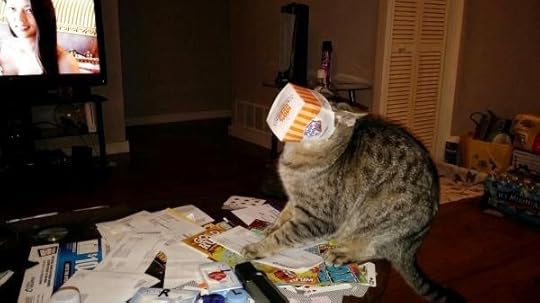
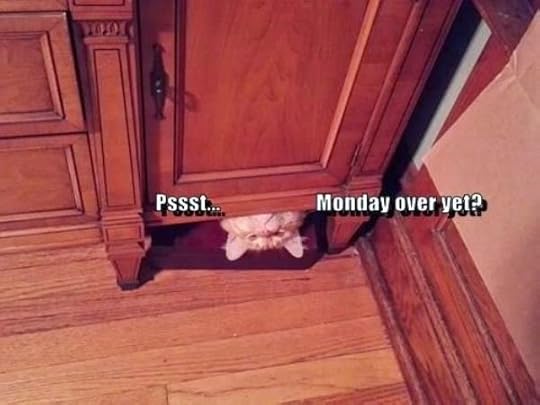

Clancy's comment: Cool, eh?
I'm ...


Published on April 01, 2015 03:16
March 31, 2015
1 April 2015 - 'A DROVER'S BLANKET' - A Powerful Excerpt
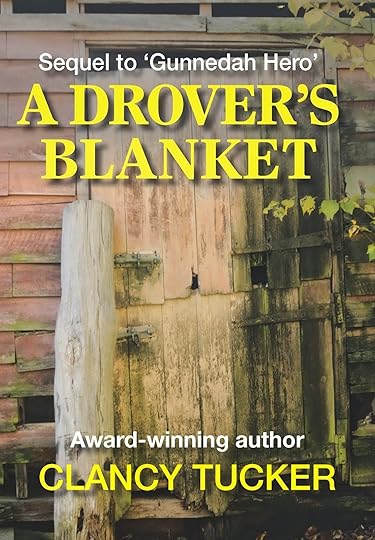
'A DROVER'S BLANKET'
- A Powerful Excerpt -
G'day folks,
Ever written something that you consider to be fairly powerful? Well, this is a piece from of one of my latest books that I consider to be very powerful. It is 1911, Australia, during the biggest drought in Australia's history. I guess you really have to read the lead up to this point in the book, but I think you will get the drift. It is written by a 14 year-old girl, Molly, who has been living under duress. She is the girlfriend of Smokey Danson, the main character in 'Gunnedah Hero', and she has kept a daily diary which she hides under the feedbin in her horse's stable because her father has become depressed and violent due to five years of drought. Not only, her father hates Smokey Danson's family. See what you think ...

Dad went to Tamarang today to buy some cattle. He arrived home late and I could tell that he’d been drinking. He swayed as he walked in the door. I was reading an old newspaper at the time and a cold chill ran up my spine when I saw the mean look my father was wearing. He was about to rage. Mum glanced up but didn’t say a word. I think she recognised the same violent expression. Fortunately, Thomas was in his room.My father staggered to the table, flopped on a chair and glared at me. ‘Molly. Don’t ever do that again,’ he said with a cold, vicious tone to his voice. I looked at him and felt frightened. Mum looked at Dad, then glanced at me and raised her eyebrows. That wasn’t a good sign.‘What, Dad?’ ‘Don’t ever sneak behind my back to see those Dansons.’ Tears were close to the surface. I guess I’d had enough of his moody antics and wanted to scream at him.‘But, Dad … ’‘Don’t give me any backchat or I’ll give you a strapping. I know what you did yesterday. Everyone in Tamarang knows.’ ‘But, why do you hate them so much?’ I asked, immediately regretting my question. When Dad stood up, his chair fell over and made a thumping noise on the floor. My father looked angry as he stumbled towards me. Fearful, I jumped to my feet and headed for the door. Trying to dash past him, his big hand clobbered me on the side of my face. A sharp pain shot through my head like a bullet as I fell against the sideboard, knocking two of Mum’s precious plates onto the floor. Both of them smashed and shards of porcelain scattered. I heard Mum gasp as I tried valiantly to stand upright. Dad lunged at me again, but I ducked and bolted for the door.‘Harold!’ Mum shrieked as I grabbed the door handle, almost ripping it off in a desperate attempt to escape.‘Come here!’ Dad hollered, but I took off into the darkness with his violent raging voice bellowing behind me. ‘Molly! Disobey me again and I’ll whip you!’I slowed down when I reached the old cattle yards. Leaning against the splinter-dry rails, I looked back at the homestead with tears crawling down my face. I could see Dad’s silhouette on the veranda, holding the fly-wire door open. ‘Come here, girl!’ he demanded, waited a few seconds then stormed inside and slammed the door. I listened intently, hoping that he wouldn’t attack Mum or Thomas. Silence prevailed, so I squatted on the ground and waited for ages until all the lamps were extinguished in the homestead. Feeling safer, I headed towards an old disused tankstand near the pigpens; one of my favourite spots to sit on summer evenings. It was high, and the view from there was beautiful. I climbed the ladder and sat cross-legged on the wooden stand, gingerly touching the side of my face where Dad had struck me. It felt hot and tender. I gently wiped tears from my face and sniffled. My mind raced. It was obvious what had happened. I’d been caught deceiving my father. Someone in Tamarang had told Dad that I was present when Smokey arrived home.Being a beautiful moonlit night, I lay on my back and rested my hands under my head; something I’d done hundreds of times before. The sky was littered with sparkling stars, so I turned my head slightly to the left and found a galaxy I loved. Smokey’s grandfather had given it a wonderful name. So wonderful, I’d used it to name my journal of memoirs – ‘A Drover’s Blanket’.A good hour must have passed. I’d not heard anything from Dad and assumed that he’d fallen asleep. However, I soon heard the sound of hooves and sat up squinting. I could see a lone horseman heading towards our homestead from the direction of Wiralee.‘Smokey,’ I whispered, and shot down the ladder in a panic, almost coming to grief as I jumped from the ladder. Getting to my feet, I could see Smokey’s silhouette in the moonlight as he cantered towards my home. My heart throbbed with excitement. I had to stop him, and ran as fast as I could, waving and shouting. He must have seen or heard me because his horse came to a halt. When I did reach him I was gasping for breath. He dismounted and rushed towards me. ‘Molly?’ ‘Yes. It’s me,’ I replied. His arms stretched out and he hugged me tightly. ‘Tell me what’s happening? You left so quickly yesterday.’ Tears instantly welled in my eyes. I didn’t know where to start, but I decided to be honest with him. ‘Smokey. Dad hates your family. I don’t know why. He found out that I met you yesterday, came home drunk and clobbered me.’ Smokey grabbed my shoulders and gently turned me so he could see my face in the moonlight. He stared into my eyes, scowled and glared at the homestead with a menacing look. I guess he could see my bruised face. ‘Molly. Maybe I can speak to him and sort this out.’ ‘No. He won’t listen. He hates you … Even more now that you have the money from the gold you found in Gunnedah.’ ‘Oh,’ Smokey replied. My father bellowed in the darkness. ‘Molly! Come here!’ I glanced over my shoulder and could sense that Dad was nearby. Smokey looked angry. He scrunched up his eyes and stared at the homestead. ‘Get here!’ Dad hollered. I panicked. ‘Quick. Smokey, go now or he’ll hurt you. He’s likely to do anything … Truly.’ Smokey grabbed me and hugged me. Then, when he gently held my face with both hands, I could feel his dry, rough skin against my cheeks – the hands of a hard-working drover. ‘I promise you one thing, Molly Jane Swenson. You’ll never regret it if you come to Wiralee and marry me. I’ll make you the Wiralee Queen. You’ll want for nothing.’ I wrapped my arms around his middle and wept. Neither of us spoke a word until I heard the frightening sound of gunshot.‘Quick, Smokey! Go, please!’ I shouted. The most wonderful drover I’d ever met kissed me on both cheeks and reluctantly mounted his horse. ‘Molly. I love you,’ he said, pulled his reins to the right and rode off. I fell to my knees and listened to the sound of his horse cantering towards Wiralee Station. Silent tears poured from my eyes when Dad hollered again. This time his voice was muffled. He seemed to be further away. Frightened, I ran to the stables to sit and think. So much had happened.I crept quietly in the shadows, stopped at the entrance to the stables and listened. It was silent as I walked inside, but my heart leapt into my mouth. Dad had been waiting for me. He grabbed me by an arm and clouted me across the face. ‘Ah!’ I screamed as pain ripped through my jaw. My father had a vice-like grip on my arm. There was no escape. He yanked me towards him and slapped me several times with an open hand. I felt my knees buckle beneath me. As I fell to the ground, he gave me a vicious punch with a closed fist. I had no idea how long I’d been unconscious, and I woke up feeling sore. The taste of blood lingered in my mouth. It was quiet, so I assumed Dad had gone. I immediately checked my pockets, pleased to know that the silver locket was still there. Lying on my back, I looked into the sky. The first thing I saw was the Drover’s Blanket. It was like a wonderful message from above. I suddenly felt no pain, and a calm feeling engulfed my entire body. It was a strange sensation. Staggering to my feet, I found my way to Dusty’s loosebox, opened the door and patted my beautiful mare. Fortunately, moonlight flooded through a large opening at the top of the stables, allowing me to see her. When Dusty snorted and nudged me as she always did, I kissed her silky neck and hugged her. Tearfully, I lit a candle and wrote the last message in my wonderful journal.
To whom it may concern
I, Molly Jane Swenson, love my family. However, I cannot remain at Swenson Station. My father is sick and I’m fearful of him. With great sadness, I have made a decision that will change my life forever. I’m walking to Wiralee Station to spend my life with a wonderful drover – Smokey ‘Gun’ Danson, the ‘Gunnedah Hero’.I will miss my beautiful horse, Dusty. God, I so dearly want to take my wonderful mare with me, but I cannot. If I did take her my father would accuse me of stealing. I will miss my family too. However, I have no choice. I must leave Swenson Station, and leave only with the clothes I’m wearing, and a precious silver locket.
Molly Jane SwensonMarch 2nd 1911
‘Oh, my God. I can hear Dad shouting. I have to finish this quickly. If he catches me again, he’ll destroy my wonderful memoirs. I better hide it in the usual place under Dusty’s feedbin. One day I’ll reclaim my book … And my horse. I promise. Goodbye, Swenson Station. Goodbye, Dusty … I’ll miss you.’
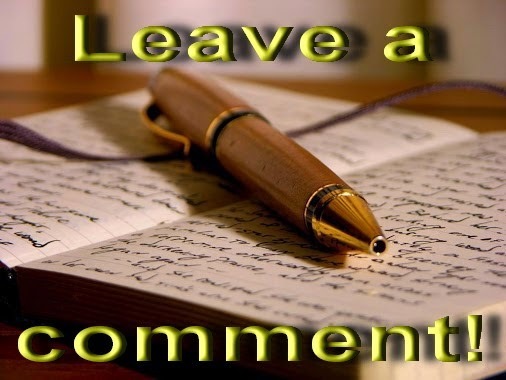
Clancy's comment: Well, what did you think of it? Did you get involved and feel the tension? Did you feel for some of the characters? Want to know what led to this point in the story, and what happened after this incident? Want to read more? Easily done. Just head to 'A Drover's Blanket Reviews' above. Then, head to my bookshop in the top right-hand corner of this page and buy a copy of 'A Drover's Blanket'; paperback or e-Book. Having said that, I suggest that you read 'Gunnedah Hero' before you read 'A Drover's Blanket'. It will explain how this all came about.
I'm ...
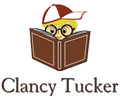

Published on March 31, 2015 02:53
March 30, 2015
31 March 2015 - DAVID K. BRYANT - Guest Author
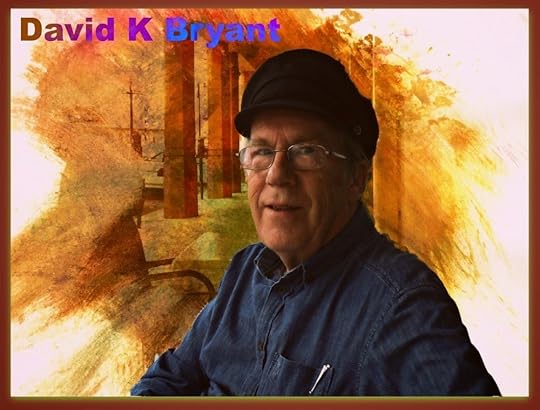
DAVID K. BRYANT
- Guest Author -
G'day folks,
Welcome to an interview I conducted with a man who spent time in Australia as a child, but now resides in the UK.
Welcome, David ...
1. TELL US A LITTLE ABOUT YOURSELF AND YOUR WRITING JOURNEY.
One of the biggest thrills of my life has been taking up my new pastime of writing books. I would never have guessed it could be so stimulating and satisfying. I was a journalist and public relations executive so I should have realized earlier that my penchant for the pen could be extended to authorship but that actually took until I was 68 years old.
I’ve been married to Stephanie for 40 years. We have a son Matthew and daughter Melanie. Our grandson Henry is two and a half and on January 9th, 2015, I got the delightful news that our second grandson Toby had arrived in the world.
2. WHEN AND HOW DID YOU BECOME A WRITER?
I had my first go at a book some time in the 1970s. It had been in my head since childhood that a prequel was needed to the great classic, Treasure Island. So I wrote one. I wasn’t impressed with it, put it in a drawer and forgot about it. Then years later, my schoolboy son Matthew read Treasure Island and I told him I’d written the prequel. At his request I read it to him. When he was in his 20s he asked to read it again. I was ashamed to give him the old sub-standard job so I started writing it all over again. This time I did all the historical research and gradually put together a bunch of characters and a plot that, I thought, worked. It became my first published book, “Tread Carefully on the Sea”.
3. WHAT TYPE OF PREPARATION DO YOU DO FOR A MANUSCRIPT? DO YOU PLAN EVERYTHING FIRST OR JUST SHOOT FROM THE HIP?
I get an idea for the premise, then think about the people who would be involved. From that, I start writing with no idea where the story’s going to go. Half the fun is finding out for myself what’s going to happen. I try to draw believable characters, put them in situations and then I talk to them. I ask them how they would react in those circumstances. They answer me and the action follows from that. It might lead to tragedy or a happy ending. I won’t know until I get there. So it’s rather like writing the book and reading it at the same time.
4. WHAT DO YOU ENJOY MOST ABOUT BEING A WRITER?
The moment of breakthrough when you know you have a story that is plausible, fits together and can be completed. It seems to come at about halfway through constructing the book.
5. WHAT IS THE HARDEST THING ABOUT BEING A WRITER?
The time and effort it takes. When I was a journalist I could knock out a 1000-word story in maybe half an hour. Books are much bigger animals. They need a massive amount of concentration and staying power.

6. WHAT WERE YOU IN A PAST LIFE, BEFORE YOU BECAME A WRITER?
I had a good career. I was in the team that launched one of the UK’s first computer-prepared daily newspapers. Later I moved from journalism into public relations and had the privilege of working on behalf of Margaret Thatcher. I promoted one of her revolutionary parliamentary Bills and I also handled communications with the world’s media after the bombing in Brighton that so easily could have killed her.
7. WHAT IS YOUR GREATEST WRITING ACHIEVEMENT?
Getting “Tread Carefully on the Sea” published. It took about a year to do so and I’m grateful to Solstice Publishing for taking it up.
8. WHAT ARE YOU WORKING ON AT THE MOMENT?
Three more books (yes all at once). They’re all historical novels but the similarity ends there. The one nearest completion is a story set in ancient Rome. Like “Tread Carefully on the Sea”, it took an enormous amount of research. It’s based around actual events as recorded by the Roman chronicler, Livy. Another of the books is set in the 1960s, a decade rightly known for its social revolution. But there was a darker side: everyone thought the world was about to end and the drama takes place against the background of the UFO hysteria of that time. The third book is a police/crime thriller set in the 1970s.
9. WHAT INSPIRES YOU?
I think writing fiction gives an opportunity to get the world in perspective. You have to understand your characters and through them you can better understand people in the real world.
10.WHAT GENRE DO YOU WRITE?
Historical fiction.
11.DO YOU HAVE ANY TIPS FOR NEW WRITERS?
Don’t give up. If you have a story in your head, it deserves to be written – and you won’t rest easy until it’s done.
See it as fun – because there will be plenty of times when it seems that the challenges are insurmountable. You have to put the book together, find a publisher, edit the book and then, when it’s finally a product, you have to market it. It all calls for patience and perseverance.
Don’t think you’ve finished the book when you write: “The end”. Go over and over it to smarten it up. Take out the lumps and add to the bits that need more clarity. Exterminate repetition. Make sure it’s not disjointed. Get the grammar right and correct the mistakes. Above all, don’t use Grammar Checker – it comes up with nonsense.
Don’t get uppity. Negative behaviour at any stage of the process will rebound on you. No one owes you anything.
Don’t get too proud. Your work can always be improved. Invite constructive criticism from family and friends before submitting for publication. Don’t think your editor is your enemy. Listen to the advice of someone who knows it all better than you do.
12.DO YOU SUFFER FROM WRITER’S BLOCK?
Everybody who invents a story encounters barriers. You just have to patient and the answers will come. Worse than “Writer’s Block” is “Cul-de-sac Block”. That’s when you’ve written reams and reams and you realize that something about the story isn’t working. There’s only one answer: Backtrack to the point where it stopped working and change it. Ask your characters what would be likely to happen. They will speak to you, honest.

13.DO YOU HAVE A PREFERRED WRITING SCHEDULE?
No, I just grab the time when I can. (Unless I’m “Writer” or “Cul-de-sac” blocked!)
14.DO YOU HAVE A FAVOURITE WRITING PLACE?
I have what I call my eyrie. It’s a bedroom/study on the top floor of my three-storey house. I sit by the window with the laptop (and spend too much time gazing out of the window).
15.WHAT IS YOUR GREATEST JOY IN WRITING?
Finishing a complete draft. I won’t say “finishing a book” because I don’t think a book can ever be finished. There’s always more that could be done with it. But at some stage, you just have to say: “That’s it. I’ve done my best.”
16.WHO IS YOUR FAVOURITE AUTHOR AND WHY?
The oldest one in the world (I think). He was Homer, author of The Iliad and The Odyssey. I believe those works set the standard for what a book should be and it’s still today’s formula. Scenario, heroes, villains, ups and downs, love, cruelty, tragedy, triumph, conspiracy, tension, what’s gonna happens, fast-flowing prose, all wrapped up in a beginning, middle and end.
17.WHAT’S THE GREATEST COMPLIMENT YOU EVER RECEIVED FROM A READER?
“Particularly well-written adventure. A seafaring one at that, right up my street.”
18.WHAT WAS THE WORST COMMENT FROM A READER?
So why did I give it four stars instead of the five it almost deserves? I suspect the problem is a habit from the author’s experience in journalism. His invisible, omniscient narrator occasionally breaks into the story and takes center stage, adding bits of information or, worse yet, hinting about what’s going to happen next… it’s deadly in a novel because it breaks the spell, reminding the reader that he’s not actually part of the action or even an observer, but is only reading about it. It’s distancing, and annoying in the extreme...Foreshadowing is necessary, but it needs to be subtle, not done with a sledgehammer.
I should confess that I speak as one who was formerly guilty of the same offense, who has been duly chastised on numerous occasions and is now reformed. Or tries to be.
(By the way, the lady who wrote this still gave the book four out of five stars!)
19.WRITERS ARE SOMETIMES INFLUENCED BY THINGS THAT HAPPEN IN THEIR OWN LIVES. ARE YOU?
In a big way. “Tread Carefully on the Sea” came about because I was mesmerized by “Treasure Island” as a child and wanted to write a sequel.
The book most influenced by my experiences, though, is the crime thriller. I spent some years working with the British police (not as an officer) and drew almost entirely on that background for the book.
20.OTHER THAN WRITING, WHAT ELSE DO YOU LOVE?
Travel mostly. I do as much as I can for leisure and my career took me to quite a few countries. This is a beautiful world.
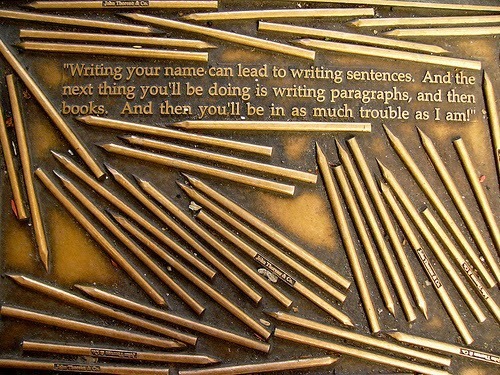
21.DID YOU HAVE YOUR BOOK / BOOKS PROFESSIONALLY EDITED BEFORE PUBLICATION?
No, and having learned the hard way, I would say to aspiring authors that this is something well worth considering, especially with a first book. After accepting my debut novel, my publisher appointed an editor and I was surprised by what he came up with. It was a valuable exercise but I could have short-cut it by having had the book looked over by an independent editor before I sent it out to publishers.
22.DESCRIBE YOUR PERFECT DAY.
Get up late.
Breakfast and coffee in dressing gown.
Bathroom stuff around midday.
Go to beach, forest or mountains.
Have lunch (around 4pm) in a pleasant but not expensive restaurant.
Go home and have a nap (maybe 5.30-6.30).
Do two hours marketing.
Dinner at home at 8.30.
Do four hours writing (9pm-midnight).
Read a good book, sitting up in bed.
Go to sleep at 2 or 3am.
23.IF YOU WERE STUCK ON A DESERT ISLAND WITH ONE PERSON, WHO WOULD IT BE? WHY?
Elvis Presley. Then I’d be with someone who had a positive nature, a great sense of humor, would buy me a car to get around the island (I presume we’re talking about an island with a Cadillac dealership), and could keep me entertained all day with his songs. Elvis and I would, of course, have a roadside diner shipped in.
24.WHAT WOULD YOU SAY IF YOU HAD THE CHANCE TO SPEAK TO WORLD LEADERS?
For God’s sake, listen to the people. I live in the UK and I wish we would just tell Europe: “You’re a lovely place to visit but would you please leave a very old, experienced nation (which is not joined to you geographically) to run its own affairs.”
25.WHAT ARE YOUR PLANS FOR THE FUTURE?
I’m retired and my plans don’t extend beyond enjoying the freest years of my life. That’s mostly writing books, spending some time on a desert island with Elvis, and travelling with my dear wife, Stephanie.
26.WHAT FIVE BOOKS WOULD YOU TAKE TO HEAVEN?
The ones I could read over and over:
The Odyssey by Homer (charming)
The Early History of Rome by Livy (fascinating and the best historical record of the kingdom, republic and empire)
Warriors of the Dragon Gold by Ray Bryant (my brother)
Treasure Island by Robert Louis Stevenson
(This one’s cheeky) Tread Carefully on the Sea by Me
27.DO YOU SEE YOURSELF IN ANY OF YOUR CHARACTERS?
I see bits of myself in all of them. One of the main things about writing a book is that the characters have to be credible and recognizable. So, when you put them into situations, you have to ask yourself: “How would I respond if that happened to me?” However, like most authors, I model characters on people I’ve known. So the other question is: “How would a person like that respond?”
28.DOES THE PUBLISHING INDUSTRY FRUSTRATE YOU?
Oh boy! The industry is changing so quickly that there’s a discord between the old and new-fashioned ways of doing things. When I started out on trying to get my first book published, I trod the traditional route – submitting to literary agents. In my naivety, I imagined hardback copies produced by a major publisher and on sale in bookstores. That would be nice, but how does a new author break into a castle with quillions of established big names? I think you’d have to write it a masterpiece and have an agent recognize that amongst the piles of books sent to him/her every day. So, to cut a long story reasonably short, I submitted to more than 300 (honestly) agents. Some didn’t even reply; some took up to a year to reply (honestly) and none gave any feedback. I then discovered the world of indie books and started sending to publishers who took submissions direct. Bingo! There’s one hell of a lot to learn about this business and I’d be glad to give advice to anyone who needs it. They can contact me through my website www.davidkbryant.com
29.DID YOU EVER THINK OF QUITTING?
Not once.
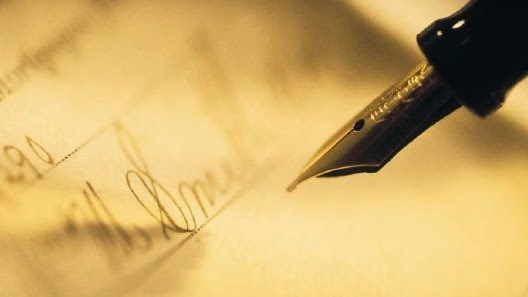
30.WHAT WAS YOUR FAVOURITE MANUSCRIPT TO WRITE? WHY?
Hard question. I’ve enjoyed writing all four that I’ve worked on so far. I will tell you my favorite character, if you like. When I wrote my Roman story, The Dust of Cannae (not yet published), I had this nagging feeling that there was something missing. Then I realized that it was not something, but somebody. This woman came into my head and told me she should be in the narrative. So I obliged. She then told me by telepathy what her role would be and she just kept on driving the story. I don’t think I have a psychic receptor but it really was like someone else had taken control to the extent of becoming a co-author. Maybe she was real and had waited more than two thousand years for her story to be told (?)
31. HOW WOULD YOU DEFINE ‘SUCCESS’ AS A WRITER?
Publication is success, but sales are a bigger one.
32. WHAT SHOULD READERS WALK AWAY FROM YOUR BOOKS KNOWING? HOW SHOULD THEY FEEL?
I think they should have been taken to a place which they wouldn’t otherwise have experienced. Plot and characters are crucially important, but so is atmosphere. An author needs to make it possible for his/her readers to visualize everything. The words should become pictures.
33. HOW MUCH THOUGHT GOES INTO DESIGNING A BOOK COVER?
I can’t speak first-hand because I’m not a designer. I do know that the cover is the only illustration of a novel. It should capture the key ingredients and tell the potential customer whether or not it’s a book for them.
34. WHAT’S YOUR ULTIMATE DREAM?
To win pots of money.
35. WRITING IS ONE THING. WHAT ABOUT MARKETING YOU, YOUR BOOKS AND YOUR BRAND? ANY THOUGHTS?
This is the crunch point for an author. They are introverts who, when it comes to marketing, have to try to turn themselves into extroverts.
There are many means of marketing and I cringe when I see my author friends recoil from them with the words: “I don’t know anything about marketing,” or “I’m not a natural marketer.” Rubbish. Writing a book is pointless if people don’t read it – and it has to find its niche amongst the million or so books published every year. Get on it, folks. Allocate two hours a day to marketing and if you don’t know how, ask someone who does. You can ask me if you like –
www.davidkbryant.com
Brand – well I don’t think people should de-humanize themselves. Authors, like anyone else in the public eye, should be approachable, responsive souls.
36. ARE YOUR BOOKS SELF-PUBLISHED?
No. My only book currently on the market was produced by Solstice Publishing, based in Missouri, USA.
37. DESCRIBE YOURSELF IN FIVE WORDS.
Lazy, opinionated, bossy, greedy, moody.
38. WHAT PISSES YOU OFF MOST?
People who are lazy, opinionated, bossy, greedy and moody.

39. WHAT IS THE TITLE OF THE LAST BOOK YOU READ? GOOD ONE?
Polarity in Motion by Brenda Vicars. Here’s the blurb for it:
Fifteen-year-old Polarity Weeks just wants to lead a normal life, but with a mother diagnosed with borderline personality disorder, that’s rarely easy.Her life gets more disastrous when her sixth-period history classmates start ogling a nude picture of her on the Internet. Polarity would never have struck such a shameless pose, but she’s at a complete loss to explain its existence.
Child Protective Services yanks her from her home, suspecting her parents. The kids at school mock her, assuming she took it herself. And Ethan, the boy she was really starting to like, backpedals and joins the taunting chorus.
40. WHAT WOULD BE THE VERY LAST SENTENCE YOU’D WRITE?
The End (that’s a joke). Last sentences are really important. They should convey to the reader: “I hope you’ve had a good time here.”
41. WHAT WOULD MAKE YOU HAPPIER THAN YOU ARE NOW? CARE TO SHARE?
Being rich. And before anybody says it – being a one-time author is not lucrative.
42. ANYTHING YOU’D LIKE TO ADD?
Phew!
Best of everything, readers.

Website: www.davidkbryant.com
Amazon: http://amzn.to/1zs9ebu

Clancy's comment: Go, David. Loved what pisses you off most! Keep going.
I'm ...

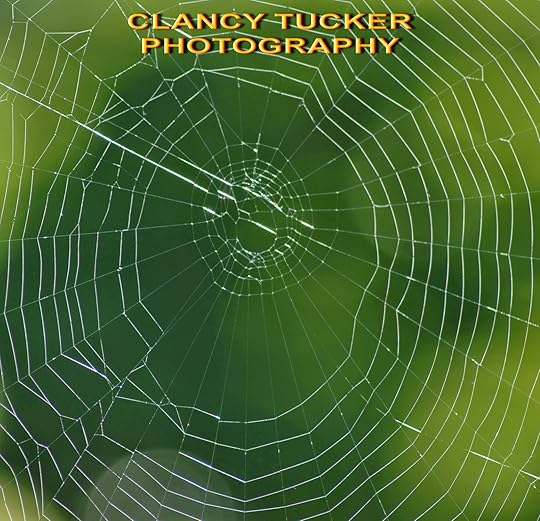
Published on March 30, 2015 03:13
March 29, 2015
30 March 2015 - FACTS ABOUT TRAINS

FACTS ABOUT TRAINS
G'day folks,
Welcome to some facts about the 'Iron Horse'. I love using trains when travelling, especially in Asia. For a photographer, they provide a great view of the countryside.
The development of the steam locomotive in the early 19th century transformed the world, carrying people and goods at unprecedented speeds around the globe. America's first steam-powered railroad—the Baltimore & Ohio—opened in 1830, and within decades hundreds of thousands of railway miles crisscrossed the nation. Today, 182 years later, the descendants of those first railroads—including CSX Transportation—continue to play a key role in our lives, moving millions of carloads of freight each year. From the earliest steam locomotives to today’s high-speed “bullet trains,” here are eight things you may not know about the “iron horse.”

1. The term “horsepower” originated as a marketing tool.
James Watt didn’t invent the steam engine, but he did create the world’s first modern one, and developed the means of measuring its power. In the 1760s, the Scottish inventor began tinkering with an earlier version of the engine designed by Thomas Newcomen. Newcomen’s design required constant cooling down and re-heating, wasting vast amounts of energy. Watt’s innovation was to add a separate condenser, greatly improving the engine’s efficiency. A savvy salesman, Watt knew that he needed a way to market his new product. He calculated how much power a single horse working in a mill could produce over a period of time (though many scientists now believe his estimates were far too high), a figure that he dubbed “horsepower.” Using this unit of measurement, he then came up with a figure that indicated how many horses just one of his engines could replace. The sales ploy worked—we’re still using the term “horsepower” today—and his engines soon became the industry standard, leading directly to invention of the first steam locomotive in 1804.

2. America’s first steam locomotive lost a race to a horse.
In 1827, the Baltimore and Ohio Railroad became the first U.S. company granted a charter for transporting both passengers and freight. However, the company struggled to produce a steam engine capable of traveling over rough and uneven terrain, instead relying on horse-drawn trains. Enter industrialist Peter Cooper: Cooper, who not coincidentally owned extensive land holdings over the proposed route of the railroad (the value of which would grow dramatically if the railroad succeeded), offered to design and build just such an engine. On August 28, 1830, Cooper’s engine, which he called the “Tom Thumb,” was undergoing testing on B&O tracks near Baltimore when a horse-drawn train pulled up alongside it and challenged Cooper (and “Tom Thumb”) to a race. Cooper accepted, and the race was on. The steam engine quickly roared into the lead, but when a belt broke loose it was forced to retire, and the horse crossed the finish line first. However, B&O executives, impressed with the massive power and speed Cooper’s engine had proven capable of, made the decision to convert their fledgling railroad to steam. The B&O became one of the most successful railways in the United States, and Cooper (with his newly minted fortune) went on to a career as an investor and philanthropist, donating the money for New York’s Cooper Union for the Advancement of Science and Art.
3. Trains helped the North win the American Civil War.
Throughout the war, railroads enabled the quick transport of large numbers of soldiers and heavy artillery over long distances. One of the most significant uses of trains came after the Battle of Chickamauga in September 1863, when Abraham Lincoln was able to send 20,000 badly needed replacement troops more than 1,200 miles from Washington, D.C. to Georgia (in just 11 days) to fortify Union forces—the longest and fastest troop movement of the 19th century. Control of the railroad in a region was crucial to military success, and railroads were often targets for military attacks aimed at cutting off the enemy from its supplies. Union General William Tecumseh Sherman provided particularly adept at the art of railroad sabotage. During his infamous “March” through Georgia and the Carolinas, his men destroyed thousands of miles of Confederate rails, leaving heaps of heated, twisted iron that southerners wearily referred to as “Sherman’s neckties.”
4. Abraham Lincoln’s assassination helped publicize train travel.
George Pullman, who had made a name for himself during the 1850s as a self-trained engineer and building mover in Chicago, began tinkering with the idea of a comfortable railroad “sleeping car” after a particularly uncomfortable train ride in upstate New York. By 1863, he had produced his first two models, the Pioneer and the Springfield, named for the Illinois hometown of then-President Abraham Lincoln. Pullman’s cars were indeed comfortable, but they were also prohibitively expensive and few railroad companies were interested in leasing them—until President Lincoln’s assassination in April 1865. After Lincoln’s death,, a Pullman car was used as part of the cortege that travelled through several Northern cities before returning his body to Illinois. The funeral train was front-page news, and when Pullman also temporarily loaned one of his beautiful sleeper cars to a grief-stricken Mary Todd Lincoln, the publicity poured in. Two years later, he established the Pullman Palace Car Company, which would revolutionize train travel around the world. Curiously enough, when Pullman died in 1897, his replacement as head of the company was none other than Robert Todd Lincoln, the slain president’s eldest son.
 A 'CT' shot in Thailand.
A 'CT' shot in Thailand. 5. The world’s first travel agency got its start thanks to a train trip.
In 1841, Englishman Thomas Cook, a Baptist minister, organized a train excursion for 540 parishioners to attend a temperance meeting in London. Cook negotiated a set fare for passengers, including tickets and a meal. The trip was so successful that he expanded his operations, first within the United Kingdom and then to the United States and Europe, providing passengers with comprehensive packages including transportation, accommodations and meals. In 1873, the agency, now known as Thomas Cook and Son, launched an international railway timetable, still published today, and by 1890 they were selling more than 3 million rail tickets annually.
6. The railroads also gave us standardized time zones.
Britain adopted a standardized time system in 1847, but it took nearly 40 more years before the United States joined the club. America still ran on local time, which could vary from town to town (and within cities themselves), making scheduling arrival, departure, and connection times nearly impossible. After years of lobbying for standardized time, representatives from all major U.S. railways met on October 11, 1883, for what became known as the General Time Convention, where they adopted a proposal that would establish five time zones spanning the country: Eastern, Central, Mountain and Pacific. The plan originally called for a fifth time zone, the Intercontinental, which was instituted several years later and became known as Atlantic Time. At noon on November 18, the U.S. Naval Observatory sent out a telegraph signal marking 12:00 pm ET, and railway office in cities and towns across the country calibrated their clocks accordingly. However, it wasn’t until 1918 that standard time became the official law of the land, when Congress passed legislation recognizing the time zone system (and instituting a new “daylight savings time” designed to conserve resources for the World War I war effort).
 'CT' in a train in Laos.
'CT' in a train in Laos.7. The miles of railroad track in the United States reached its peak in 1916.
It didn’t take long for railroads to catch on in the United States. The same year that the “Tom Thumb” lost its race, there were just 23 miles of railroad tracks in the United States. But within 20 years there were more than 9,000, as the U.S. government passed its first Railroad Land Grant Act, designed to attract settlers to the undeveloped parts of the country. By the beginning of the Civil War in 1861, there were 30,000 miles (more than 21,000 of them in the North), and lobbyists were clamoring for a transcontinental system across the nation. The number of railroad miles continued to climb until hitting its peak in 1916. That year there were more than 250,000 miles of track—enough to reach the moon from Earth.
8. Today’s bullet trains can top 300 mph.
When Englishman Richard Trevithick launched the first practical steam locomotive in 1804, it averaged less than 10 mph. Today, several high-speed rail lines are regularly travelling 30 times as fast. When Japan’s first Shinkansen or “bullet trains,” opened to coincide with the 1964 Tokyo Olympics, they were capable of running at speeds in excess of 130 mph. In the 40 years since, the top speed of these trains has been steadily climbing, with a current world speed record of 361 mph. Japan is no longer alone in the high-speed rail department however: France, China and Germany all operate trains capable of similar extreme speeds, and the plans are currently underway in the United States to construct a high-speed rail line connecting the California cities of San Francisco and Anaheim.

Clancy's comment: Yep, I love trains, more than I like busses and planes. But, I guess planes are okay. They are much quicker than swimming.
I'm ...
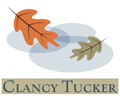

Published on March 29, 2015 03:30
March 28, 2015
29 March 2015 - TIPS FROM FAMOUS AUTHORS
TIPS FROM FAMOUS AUTHORS
G'day folks,
Welcome to some great tips from some well-known authors. Hope they inspire you writers.
So what can we do to improve our writing? Below, find 25 snippets of insight from some exceptional authors. While they are all focused on the craft of writing, most of these tips pertain to pushing forward creative projects of any kind.
1. PD James: On just sitting down and doing it…
Don’t just plan to write—write. It is only by writing, not dreaming about it, that we develop our own style.
2. Steven Pressfield: On starting before you’re ready…
[The] Resistance knows that the longer we noodle around “getting ready,” the more time and opportunity we’ll have to sabotage ourselves. Resistance loves it when we hesitate, when we over-prepare. The answer: plunge in.
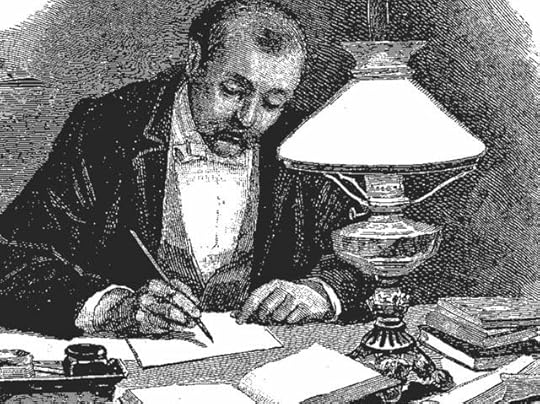
3. Esther Freud: On finding your routine…
Find your best time of the day for writing and write. Don’t let anything else interfere. Afterwards it won’t matter to you that the kitchen is a mess.
4. Zadie Smith: On unplugging…
Work on a computer that is disconnected from the internet.
5. Kurt Vonnegut: On finding a subject…
Find a subject you care about and which you in your heart feel others should care about. It is this genuine caring, and not your games with language, which will be the most compelling and seductive element in your style. I am not urging you to write a novel, by the way — although I would not be sorry if you wrote one, provided you genuinely cared about something. A petition to the mayor about a pothole in front of your house or a love letter to the girl next door will do.
6. Maryn McKenna: On keeping your thoughts organized…
Find an organizational scheme for your notes and materials; keep up with it (if you are transcribing sound files or notebooks, don’t let yourself fall behind); and be faithful to it: Don’t obsess over an apparently better scheme that someone else has. At some point during your work, someone will release what looks like a brilliant piece of software that will solve all your problems. Resist the urge to try it out, whatever it is, unless 1) it is endorsed by people whose working methods you already know to be like your own and 2) you know you can implement it quickly and easily without a lot of backfilling. Reworking organizational schemes is incredibly seductive and a massive timesuck.
7. Bill Wasik: On the importance of having an outline…
Hone your outline and then cling to it as a lifeline. You can adjust it in mid-stream, but don’t try to just write your way into a better structure: think about the right structure and then write to it. Your outline will get you through those periods when you can’t possibly imagine ever finishing the damn thing — at those times, your outline will let you see it as a sequence of manageable 1,000 word sections.
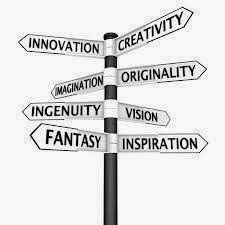
8. Joshua Wolf Shenk: On getting through that first draft…
Get through a draft as quickly as possible. Hard to know the shape of the thing until you have a draft. Literally, when I wrote the last page of my first draft of “Lincoln’s Melancholy” I thought, Oh, shit, now I get the shape of this. But I had wasted years, literally years, writing and re-writing the first third to first half. The old writer’s rule applies: Have the courage to write badly.
9. Sarah Waters: On being disciplined…
Treat writing as a job. Be disciplined. Lots of writers get a bit OCD-ish about this. Graham Greene famously wrote 500 words a day. Jean Plaidy managed 5,000 before lunch, then spent the afternoon answering fan mail. My minimum is 1,000 words a day – which is sometimes easy to achieve, and is sometimes, frankly, like shitting a brick, but I will make myself stay at my desk until I’ve got there, because I know that by doing that I am inching the book forward. Those 1,000 words might well be rubbish – they often are. But then, it is always easier to return to rubbish words at a later date and make them better.
10. Jennifer Egan: On being willing to write badly…
[Be] willing to write really badly. It won’t hurt you to do that. I think there is this fear of writing badly, something primal about it, like: “This bad stuff is coming out of me…” Forget it! Let it float away and the good stuff follows. For me, the bad beginning is just something to build on. It’s no big deal. You have to give yourself permission to do that because you can’t expect to write regularly and always write well. That’s when people get into the habit of waiting for the good moments, and that is where I think writer’s block comes from. Like: It’s not happening. Well, maybe good writing isn’t happening, but let some bad writing happen… When I was writing “The Keep,” my writing was so terrible. It was God-awful. My working title for that first draft was, A Short Bad Novel. I thought: “How can I disappoint?”
11. AL Kennedy: On fear…
Be without fear. This is impossible, but let the small fears drive your rewriting and set aside the large ones until they behave – then use them, maybe even write them. Too much fear and all you’ll get is silence.
12. Will Self: On not looking back…
Don’t look back until you’ve written an entire draft, just begin each day from the last sentence you wrote the preceeding day. This prevents those cringing feelings, and means that you have a substantial body of work before you get down to the real work which is all in… The edit.
13. Haruki Murakami: On building up your ability to concentrate…
In private correspondence the great mystery writer Raymond Chandler once confessed that even if he didn’t write anything, he made sure he sat down at his desk every single day and concentrated. I understand the purpose behind his doing this. This is the way Chandler gave himself the physical stamina a professional writer needs, quietly strengthening his willpower. This sort of daily training was indispensable to him.
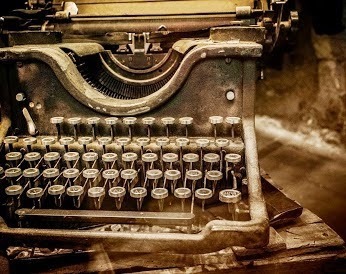
14. Geoff Dyer: On the power of multiple projects…
Have more than one idea on the go at any one time. If it’s a choice between writing a book and doing nothing I will always choose the latter. It’s only if I have an idea for two books that I choose one rather than the other. I always have to feel that I’m bunking off from something.
15. Augusten Burroughs: On who to hang out with…
Don’t hang around with people who are negative and who are not supportive of your writing. Make friends with writers so that you have a community. Hopefully, your community of writer friends will be good and they’ll give you good feedback and good criticism on your writing but really the best way to be a writer is to be a writer.
16. Neil Gaiman: On feedback…
When people tell you something’s wrong or doesn’t work for them, they are almost always right. When they tell you exactly what they think is wrong and how to fix it, they are almost always wrong.
17. Margaret Atwood: On second readers…
You can never read your own book with the innocent anticipation that comes with that first delicious page of a new book, because you wrote the thing. You’ve been backstage. You’ve seen how the rabbits were smuggled into the hat. Therefore ask a reading friend or two to look at it before you give it to anyone in the publishing business. This friend should not be someone with whom you have a romantic relationship, unless you want to break up.
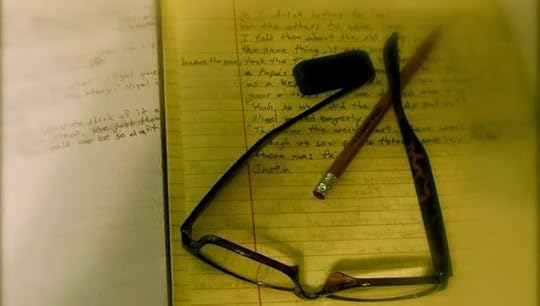
18. Richard Ford: On others’ fame and success…
Try to think of others’ good luck as encouragement to yourself.
19. Helen Dunmore: On when to stop…
Finish the day’s writing when you still want to continue.
20. Hilary Mantel: On getting stuck…
If you get stuck, get away from your desk. Take a walk, take a bath, go to sleep, make a pie, draw, listen to music, meditate, exercise; whatever you do, don’t just stick there scowling at the problem. But don’t make telephone calls or go to a party; if you do, other people’s words will pour in where your lost words should be. Open a gap for them, create a space. Be patient.
21. Annie Dillard: On things getting out of control…
A work in progress quickly becomes feral. It reverts to a wild state overnight… it is a lion growing in strength. You must visit it every day and reassert your mastery over it. If you skip a day, you are, quite rightly, afraid to open the door to its room. You enter its room with bravura, holding a chair at the thing and shouting, ‘Simba!’
22. Cory Doctorow: On writing when the going gets tough…
Write even when the world is chaotic. You don’t need a cigarette, silence, music, a comfortable chair, or inner peace to write. You just need ten minutes and a writing implement.
23. Chinua Achebe: On doing all that you can…
I believe myself that a good writer doesn’t really need to be told anything except to keep at it. Just think of the work you’ve set yourself to do, and do it as well as you can. Once you have really done all you can, then you can show it to people. But I find this is increasingly not the case with the younger people. They do a first draft and want somebody to finish it off for them with good advice. So I just maneuver myself out of this. I say, Keep at it. I grew up recognizing that there was nobody to give me any advice and that you do your best and if it’s not good enough, someday you will come to terms with that.

24. Joyce Carol Oates: On persevering…
I have forced myself to begin writing when I’ve been utterly exhausted, when I’ve felt my soul as thin as a playing card, when nothing has seemed worth enduring for another five minutes… and somehow the activity of writing changes everything. Or appears to do so.
25. Anne Enright: On why none of this advice really matters…
The way to write a book is to actually write a book. A pen is useful, typing is also good. Keep putting words on the page.

Clancy's comment: I hope these have inspired you. And, my tip? Find something you are passionate about and write passionately about it.
I'm ...


Published on March 28, 2015 03:30
March 27, 2015
28 March 2015 - COLOUR AND NATURE

COLOUR AND NATURE
G'day folks,
As a photographer, I'm always observing nature, whether it's strange plants or beautiful animals. So, having said that, check out these magnificent species.





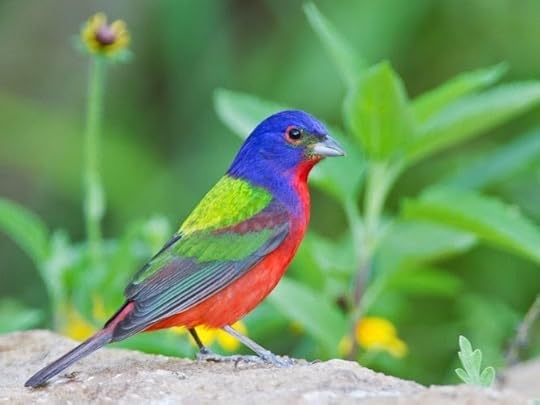





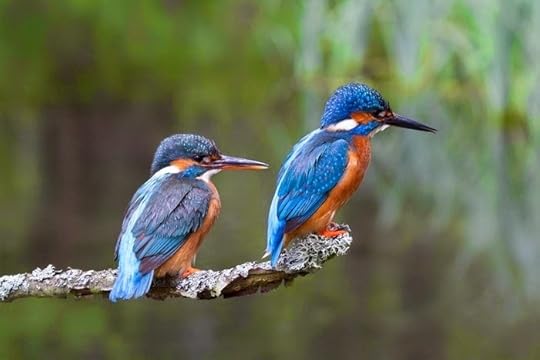











Clancy's comment: Wow. Stunning, eh? Magnificent display by some very talented photographers. Simply gob smacking.
I'm ...
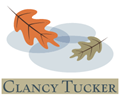
Think about this!
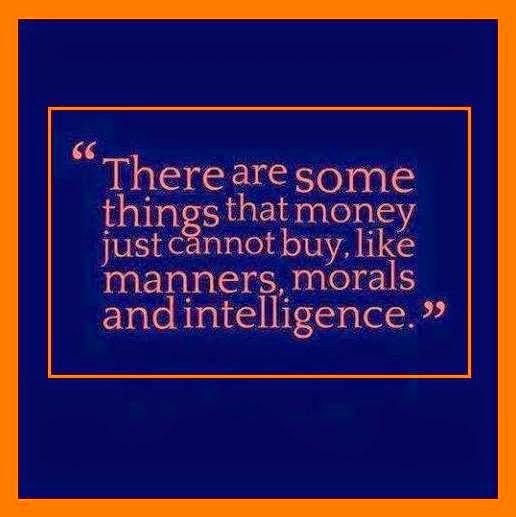
Published on March 27, 2015 03:45
March 26, 2015
27 March 2015 - JENNIFER DOUGLAS - LITERARY PUBLICIST
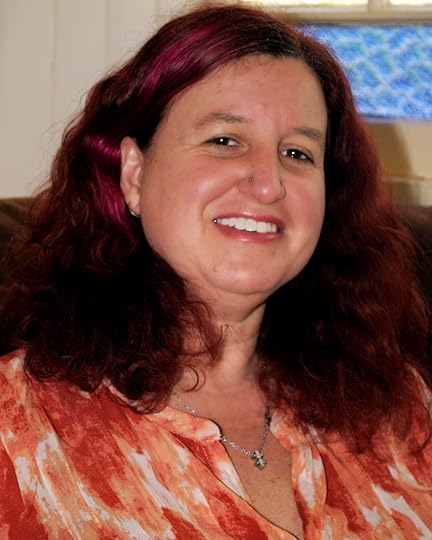
Jennifer Douglas
- Literary Publicist -
G'day folks,
Welcome to my first interview with a literary publicist.
Welcome, Jennifer ...
1. Why did you become a literary publicist?
It was something I sort of fell into. I have always had a passion for words and literature but took the career path of Early Childhood to start with. When I had my first daughter I decided to home educate her and whilst doing so reviewed educational books for Australian publishers Allen and Unwin. This soon led to reviewing all genre and to requests for helping authors in other areas. During this time I was continuing my own education studying children’s writing, poetry, an advance diploma in journalism and a diploma in business studies.
2. What do you enjoy about your job?
A tough question as there is really nothing about my job I hate. I feel blessed to be able to travel with authors from the initial idea to manuscript, published book and beyond.
3. What do you dislike about your job?
The fact that there are not enough hours in the day to be able to work with every author who contacts me and read every book I want to.
4. Is there one main point, or many points that convince you to take on an author?
There really isn’t any points as such that convince me, I just get the feeling that a I can help a particular author. I usually know by the end of our first correspondence whether I will take them on or not. Being a supporter of self published authors I take into consideration what they have already been doing to help themselves, if I feel they are passionate about their books and whether they are willing to learn. A large part of my working with an author is empowering them and giving them the skills they need to promote themselves. The book itself does come into play to a degree. I look for books that are a little different and ‘out there’. Books that mainstream publicists will not touch due to them being controversial or outside of mainstream literature. Of course I still carry a passion for children’s books.
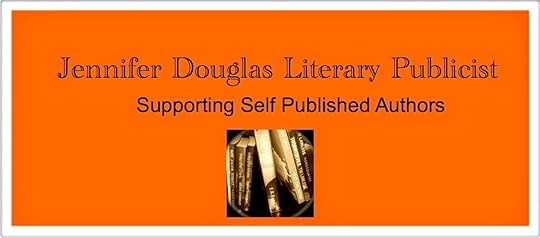
5. What is the worst moment you have had as a publicist?
I don’t recall any ‘worst’ moments. Working with a large amount of authors globally each year means I work with a lot of different personalities. This can be a challenge so of course there are good and bad times but nothing that has been so bad it could be put in the worst category. I have only ever had one author who I would never work with again and I know there are a lot of people who feel the same about her. She would praise my work in an over the top gushy way then at the click of the fingers turn to being nasty and want something else. I soon found out she has used a lot of people. It is a reflection of her and her product and I just became another on her list. I just marked it off as a learning experience and moved on. They only do harm to themselves and reinforced to myself the support I have from my author family.
Time is short and there are a lot of authors who benefit from my help, I do not dwell on the negative experiences.
6. What was the best moment?
Again there is no best moment. Every day is amazing. I am rewarded each day as I watch the growth of authors both professionally and personally. I started working with some of my clients when they were publishing their first book and am still with them 4 or 5 books later. Watching this progress is wonderful.
7. Do you have any tips for authors seeking a literary publicist?
You are going to spend time working closely with the publicist so it is important to make sure that communication is kept open and honest at all times. Make sure that their personality suits yours. The authors I work with know they can contact me 7 days a week at no cost to them for honest advice. This contact is probably one of the most important things as it leads to successful publicity. A publicist should not be afraid to tell you if they feel something in your book does not sit right, there are errors or the publicity direction you wish to take is not for the best. A publicist should always have the success of your book as their top priority.
8. Would you recommend your career to others?
Definitely! It is long hours and you need to be good at multitasking and working with more than one author at a time but it is very reward.
9. Describe a good author from a publicist point of view?
One who is dedicated and passionate about what they do. They need to be able to take criticism and want to better themselves. Regardless of what you do books will not sell themselves. A good author will understand this and be willing to work hard to achieve sales.

10. If you had your time over, would you be a literary publicist?
Definitely! I wish I had chosen it as my initial career path.
11. What inspires you the most?
The talent I see as I go about my day. Authors inspire me with their devotion and passion for what they do. The way they play with words creating a world of adventure and learning. Illustrators also inspire me. Such talent I only wish I had.
12. Describe your perfect day?
Coffee, coffee and more coffee. On a serious note a perfect day for me is a day that I am surrounded by authors, books and the love of my children.
13. How do you see the publishing industry now and into the future?
With the introduction of ebooks over the past years the publishing industry has changed but it will only continue to grow. I have always maintained that there is a place for the ebook but they would never replace the paper book, we are now seeing the decline of sales of ebooks as the paper book picks up momentum again. I hope that this will lead to the decline in the amount of cheap, poorly written books with stock photo covers. Sorry my pet hate.
As far as publicity goes technology has seen a change in the way we go about getting our message out there. Social media currently leads the way and I see this only growing as more and more people choose to buy their books from Amazon and online bookstore. We are slowing become a ‘one click’ society.
14. What are your personal plans for the future?
To continue to grow my business globally. To continue to support self published authors create growth in what they do. The last 12 months has seen me doing a quite a lot of ghostwriting. This is something I look forward to doing a lot more of in the near future.
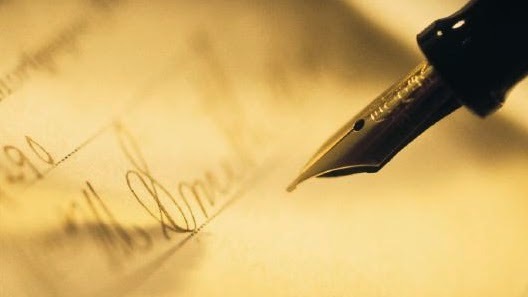
15. Any regrets?
None at all!

www.jenniferdouglasliterarypublicist.com
Facebook: www.facebook.com/jdliterarypublicist
Twitter: @GoodGabble
Email: doublecreations@gmail.com

Clancy's comment: Jennifer, you have been very generous with your time. Thank you. It's great to meet someone who loves their job, and someone who who is helping independent authors. More strength to your arm.
I'm ...


Published on March 26, 2015 02:58
March 25, 2015
26 March 2015 - FACTS ABOUT MONEY

FACTS ABOUT MONEY
G'day folks,
Ever wondered how money was created? They say “money makes the world go round,” and long before the invention of money as we know it, people were using goods such as salt, cattle and even weapons as forms of currency. From China’s “flying money” to Siberian “soft gold,” here are eight things you may not know about the history of money.
1. China created the world’s first paper money.
Nearly 700 years before Sweden issued the first European banknotes in 1661, China released the first generally circulating currency. In fact, usage of paper notes dates backs even earlier, to the 7th century Tang Dynasty. For centuries copper coins had been China’s primary currency. In order to carry large amounts of cash, people hefted around an ever-increasing number of these coins–not the easiest, or safest, thing to do over long distances. In an attempt to lighten their load, merchants began to deposit these coins with each other and were issued paper certificates for the coin’s value. The paper was certainly lighter. So light, in fact, that it is believed to have earned the nickname “flying money,” for its tendency to blow away in a stiff wind. The use of paper money remained limited for the next 200 years, until a copper shortage forced merchants and Song Dynasty government officials alike to issue and accept paper notes backed by gold reserves—the first legal tender in the world.

2. The Inca built a great empire—without the use of money at all.
Unlike the neighboring Aztecs or Mayas, who used goods such as beans and textiles to buy and sell products, there was no concept of “money” among the Inca. So, how did they manage to create the largest—and wealthiest—empire in South America? Through a highly regimented system known as the “Mit’a.” From the age of 15, Incan males were required to provide physical labor to the state for a set number of days, sometimes as much as two-thirds of the year. They built public buildings and palaces, as well as an extensive system of roads (14,000 miles in all), which linked the empire together and allowed for its ongoing expansion. In return, the government provided all the basic necessities of life; food, clothing, tools, housing, etc. No money changed hands. Indeed, even if there had been money, there was simply nowhere for an Incan to spend it—no shops, no markets, no malls. That’s not to say that Incan society didn’t value the massive piles of gold and silver sitting beneath their lands. In fact, the Inca used these precious metals as part of their religious worship, considering gold the “sweat of the sun,” and silver the “tears of the moon.”
3. Medieval merchants developed an early version of the credit card.
In an era when currency was often unavailable (and few people were literate), the tally stick, a forerunner of today’s high-tech credit cards, became increasingly popular in Europe. In this early version of financial record keeping, notches were made on a wooden stick to indicate the amount lent—and owed. The sticks were then split down the middle; the creditor kept one half and the debtor the other. When a payment was made, the sticks were paired up, and the payment was marked on the stick. The tally stick system also had another built-in benefit: It was nearly impossible to counterfeit, as the shape, size and grain of the wooden halves had to match up perfectly. Tally sticks were used in much of Europe, but probably nowhere as extensively as in England. For more than 700 years, tally sticks were used to collect taxes from local citizens, until the system was finally abandoned in 1826. Eight years later, when the British parliament finally decided to get rid of the thousands of leftover tally sticks being kept in storage, they decided to burn them in an underground furnace that heated the House of Lords, resulting in a massive fire that destroyed most of the complex—the worst fire to hit London since the Great Fire of 1666.

4. Czarist Russia created a tax payable only in animal fur.
The arrival of Russian hunters and trappers in what was then the remote wilderness of Siberia in the 1600s kicked off a “fur rush” that many historians have compared to the later California gold rush in its intensity. At the height of the Russian fur trade these pelts had became so valuable that they were called “soft gold” and accepted as hard currency throughout the empire. By some estimates, they accounted for more than 10 percent of Russia’s total revenue. Eager to reap the financial rewards of the trade, Russia’s czarist government began to regulate the price of the pelts. By the early 17th century, in an attempt to keep up with the massive worldwide demand, they went one step further, imposing a new tax on thousands of Siberian peasants. The “yasak” was an annual tribute, payable solely in fur, required of every male over the age of 18. Successful payment of this fur tax meant protection from harm, while refusal often resulted in vicious attacks and raids at the hands of hired gangs.
5. Paul Revere played a key role in the creation of early American currency.
Revere, famed for his 1775 “midnight ride” to warn American colonists of an impending British invasion, was actually far more famous in his day for his work as an engraver and as one of the colonies’ premiere silversmiths. Just months after his exploits near Concord, it was Revere who was tasked with designing the engraving plates for the first Continental currency, or Continentals, produced by Massachusetts to fund the war. By the end of the American Revolution, these early paper notes had become worthless, and one of the first projects undertaken by the U.S. government following the ratification of the Constitution was the passage of the Coinage Act, establishing the U.S. Mint and regulating coin production. The first regularly circulating coins in American history were delivered in March 1793, consisting of exactly 11,178 one-cent pieces—or $111.78—and made of rolled copper provided, in part, by Paul Revere.
6. The first gold rush in American history took place in North Carolina, not California.
In 1799, the 12-year old son of a Cabarrus County farmer named John Reed discovered a gold nugget weighing an estimated 17 pounds, so large that his family used it as doorstop. When more gold was discovered in neighboring counties, it kicked off the first prospecting boom in American history, drawing thousands of people to the area, many of them newly arrived immigrants. By the early 19th century, more than 30,000 North Carolinians were mining for gold, making it the second largest profession in the state after agriculture. The prospect of financial reward was so high that professional mining companies soon entered the scene, bringing with them workers and engineers with years of experience extracting precious metals from South American mines. For more than 30 years, all gold used in U.S. coins was mined in North Carolina, and a U.S. Mint was opened in the city of Charlotte in 1837. However, decades of mining eventually depleted the region’s reserves, and by the 1860s, the Carolina Gold Boom had ended.

7. Counterfeiting was rampant during the American Civil War.
Money tampering has been around nearly as long as money itself has existed. Early coins were shaved around the edges, with the perpetrator pocketing the excess precious metals. Rome, among other ancient civilizations, made counterfeiting a crime punishable by death. The U.S. government struggled with the issue from its inception, going so far as to hire an ex-counterfeiter to design some of its first coins. Despite these efforts, the problem continued, likely reaching its apex during the American Civil War. With dozens of different notes and coins being issued by state, local and federal governments on both sides, it was nearly impossible to detect the real from the fake. It’s been estimated that at least one-third (and possible half) of all money then in circulation was fraudulent. In fact, the U.S. Secret Service was created in 1865—not to protect the president—but to combat counterfeiting. The term “greenback,” a now-common term for money, also traces its origins to the war. The phrase was derived from the intricate green ink designs used on the reverse side of Civil War-era banknotes, which the U.S. Treasury Department hoped would prevent counterfeiting.
8. West Point Mint was “the Fort Knox of silver” and has a whole lot of gold.
When most people think of vast amounts of precious metals tucked away in secure locations, it’s Fort Knox that comes to mind. Few people know that a tiny facility in New York State once rivaled Knox in the wealth department, and was home to the largest concentration of silver in the United States. Opened in 1937 and originally known as the West Point Bullion Depository, the Mint is located just miles from the U.S. Military Academy at West Point. There are currently more than 54 million ounces of gold in “deep storage” at the facility, with an estimated value of more than $80 billion dollars, making West Point the second largest gold depository after Fort Knox. Though it did not achieve official status as a U.S. Mint until 1988, it had begun striking pennies and gold medallions decades earlier. Today, it issues coins struck with the “W” mint mark in gold, silver and platinum, including the only U.S. coins issued to commemorate the September 11 attacks.

Clancy's comment: Interesting, eh? Most folks would say they can never have enough of it. Yet, others would say that money is the root of all evil. Me? I wish you enough. No more, no less.
I'm ...


Published on March 25, 2015 03:24
March 24, 2015
25 March 2015 - HENRY AUGUSTINE & PROSE

HENRY AUGUSTINE &PROSE
G'day folks,
Welcome to something different for you writers and authors. This is a guest post from Henry Augustine.
Take it away, Henry ...
“Prose: Leveling the Publishing Industry Playfield”
I would like to thank Clancy for this opportunity to share “Prose” with his worldwide audience.
Prose is an online reading and writing platform on a mission to inspire and empower writers globally and level the publishing industry playfield. The key to fulfilling this mission is technology. Prose’s technology aims to redefine the experience of literature for readers and writers spanning all skills, genres, and locations.
In particular, the technology emphasizes three primary elements:
1) Simplicity, 2) Community, and 3) Entertainment.

The platform is simple so that creating/discovering writing is intuitive and efficient. We designed it to be social in that the interaction experience feels like a small, genuine community.
The platform is entertaining in particular through its “Challenges” feature, enabling users to create writing challenges, invite fans and friends to participate, and interact in whole new ways.
For example, award-winning Seattle author Terry Trueman was thrilled to discover Prose and used it to engage his readers more humanly and theatrically. He first posted this challenge –
“Dear Fans: Write, in 100 words or less, about the 2nd most intense experience of your life. I will participate in this challenge under a pseudonym. After it expires in February, I will remove the pseudonym mask.”
– Then shared it with his fans, encouraging them to participate.
While as a platform, Prose enables new forms of author-audience interaction such as this example, as a cause, Prose is in the process of joining forces with as many publishers, writers, and readers as possible. Prose will then connect readers with the writing and writers matching their unique literary taste, almost like a “Pandora for Writing.”
The ultimate problem that Prose is attempting to solve is there being significantly more literary potential, literary talent, and literary demand than there currently is literary distribution. In short, the vision driving Prose is a win-win-win – a win for writers and literary talent, a win for readers and literary demand, and a win for publishers and literary distribution.

Prose believes that empowering young, talented and aspiring writers is critical to its mission, so is partnering with high schools and colleges to connect their best talent with its ecosystem of distributers and get them publishing deals. One of our goals is to unite young readers and writers from all continents to help young voices get the audience, validation, and support they need to thrive. If you are affiliated with any writing programs, we would love to hear from you.

The Prose iTunes app launched September 2014 and the web app, for non-iPhone users and desktop use, launched in November. You can experience Prose at https://theprose.com/.
For questions, feel free to email info@theprose.com.
Sincerely,
H.B. AugustineCo-Founder, Prose.

Clancy's comment: Thank you, Henry. I hope you get some great feedback.
I'm ...


Published on March 24, 2015 03:20



